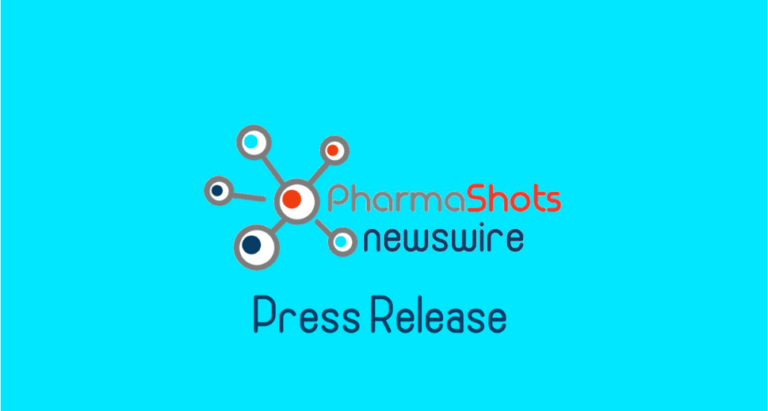Novartis Tafinlar® (dabrafenib) + Mekinist® (trametinib) demonstrates unprecedented efficacy in pediatric patients with BRAF V600 low-grade gliomas in Phase II/III study
Basel, June 6, 2022 — Novartis today announced Tafinlar® (dabrafenib) + Mekinist® (trametinib) significantly improved efficacy in patients ages 1 to 17 years old with BRAF V600 pediatric low-grade glioma (pLGG) requiring first systemic treatment compared to chemotherapy, the current standard-of-care for these patients1. In this study, patients randomized to receive Tafinlar + Mekinist experienced a statistically significant overall response rate (ORR) of 47% (CI: 35-59%) compared to 11% (CI: 3-25%, p<0.001) for those randomized to receive chemotherapy. A new liquid formulation of Tafinlar + Mekinist that can be easier to administer than chemotherapy was used in this trial. The data will be highlighted today as part of an official press briefing and oral presentation at the 2022 American Society of Clinical Oncology (ASCO) Annual Meeting (Abstract #LBA2002).
“These results show dabrafenib and trametinib demonstrate an improvement over chemotherapy for children and adolescents with BRAF V600 low-grade gliomas,” said Eric Bouffet, MD, FRCPC, Senior Associate Scientist Emeritus at The Hospital for Sick Children (SickKids) in Toronto, Canada. “This work highlights the importance of testing for mutations like BRAF in patients with low-grade gliomas.”
LGG is the most common pediatric brain cancer and BRAF V600 mutations are present in 15-20% of pLGGs2,5. Currently, standard chemotherapy is associated with poor outcomes and a high burden of care6.
Additional results from the Phase II/III trial showed at a median follow-up of 18.9 months, median progression-free survival (PFS) was 20.1 months with Tafinlar + Mekinist (CI: 12.8 months-not estimable) compared to 7.4 months with chemotherapy (CI: 3.6-11.8 months, hazard ratio=0.31 [CI: 0.17-0.55] [p<0.001])1. Additionally, tumors shrank or remained stable in 86% of patients in the Tafinlar + Mekinist arm (n=73; CI: 76-93%) compared to 46% of patients in the chemotherapy arm (n=37; CI: 30-63%). After one year of follow-up, nearly all patients on Tafinlar + Mekinist (89%) had a reduction in tumor size compared with baseline versus 70% of patients in the chemotherapy arm. Results from a quality-of-life analysis favored Tafinlar + Mekinist compared to chemotherapy at all time points1.
“These young patients and their families experience a heavy burden of care as BRAF V600 low-grade glioma poses a risk of neurological impairment and current standard-of-care treatment is intravenous and associated with frequent trips to the cancer clinic or hospital,” said Jeff Legos, Executive Vice President, Global Head of Oncology & Hematology Development at Novartis. “Tafinlar + Mekinist has shown unprecedented efficacy, and we will work with health authorities to bring these children the possibility of a more effective and easier to administer liquid oral treatment option as quickly as possible.”
The safety profile of Tafinlar + Mekinist was generally consistent with established safety observed in previous studies. Patients in the Tafinlar + Mekinist arm had fewer grade 3 or higher adverse events (AEs; 47% vs 94%) and fewer discontinuations due to AEs (4% vs 18%) than patients in the chemotherapy arm evaluated for safety (n=33)1. The most frequent AEs in the Tafinlar + Mekinist arm were pyrexia, headache and vomiting1.
In a separate single-arm cohort of this study evaluating pediatric patients with relapsed or refractory BRAF V600 high-grade gliomas (HGG), treatment with Tafinlar + Mekinist showed an independently assessed ORR of 56.1% [CI: 39.7%-71.5%] and generally consistent safety results4. These data were presented in a poster discussion at the 2022 ASCO Annual Meeting (Abstract #2009).
Tafinlar + Mekinist was granted Breakthrough Therapy designation by the US Food and Drug Administration for the treatment of pediatric patients one year of age and older with LGG with a BRAF V600E mutation who require systemic therapy.
About the TADPOLE trial
This global Phase II/III, multicenter, open-label trial is evaluating patients aged 1 to 17 with BRAF V600 LGG (n=110) or relapsed or refractory HGG (n=41)1. Tafinlar + Mekinist is administered orally either as new liquid formulations, or as capsules and tablets, respectively. The primary endpoint in both cohorts is overall response rate. Secondary outcome measures include duration of response, progression-free survival, overall survival and other endpoints1.
About pediatric gliomas
Gliomas are the most common pediatric central nervous system tumor type, representing about half of all pediatric brain cancers5,7,8. Gliomas are classified as either low-grade (grades 1 and 2) or high-grade (grades 3 and 4)7.
Pediatric low-grade gliomas positive for the BRAF V600E mutation have been associated with worse survival outcomes (OS/PFS) and are found in approximately 15-20% of pLGG2,3. BRAF mutations are found in approximately 3% to 7% of people with HGG (all ages combined)9,10.
BRAF mutations have been identified as drivers of cancer growth across a wide range of solid tumors and often have limited treatment options11,12.
About Tafinlar + Mekinist
The combination of Tafinlar + Mekinist, the worldwide targeted therapy leader in BRAF/MEK-inhibition research and patients reached, may help to slow tumor growth by blocking signals associated with the BRAF and MEK kinases, which are implicated in the growth of various types of cancer11-15. Tafinlar + Mekinist has been studied in more than 6,000 BRAF-positive patients in more than 20 ongoing and completed trials and has been prescribed to more than 200,000 patients worldwide15.
Tafinlar + Mekinist is currently not approved for pediatric patients with LGG or HGG. These results will form the basis of regulatory discussions with global health authorities.
Disclaimer
This press release contains forward-looking statements within the meaning of the United States Private Securities Litigation Reform Act of 1995. Forward-looking statements can generally be identified by words such as “potential,” “can,” “will,” “plan,” “may,” “could,” “would,” “expect,” “anticipate,” “seek,” “look forward,” “believe,” “committed,” “investigational,” “pipeline,” “launch,” or similar terms, or by express or implied discussions regarding potential marketing approvals, new indications or labeling for the investigational or approved products described in this press release, or regarding potential future revenues from such products. You should not place undue reliance on these statements. Such forward-looking statements are based on our current beliefs and expectations regarding future events, and are subject to significant known and unknown risks and uncertainties. Should one or more of these risks or uncertainties materialize, or should underlying assumptions prove incorrect, actual results may vary materially from those set forth in the forward-looking statements. There can be no guarantee that the investigational or approved products described in this press release will be submitted or approved for sale or for any additional indications or labeling in any market, or at any particular time. Nor can there be any guarantee that such products will be commercially successful in the future. In particular, our expectations regarding such products could be affected by, among other things, the uncertainties inherent in research and development, including clinical trial results and additional analysis of existing clinical data; regulatory actions or delays or government regulation generally; global trends toward health care cost containment, including government, payor and general public pricing and reimbursement pressures and requirements for increased pricing transparency; our ability to obtain or maintain proprietary intellectual property protection; the particular prescribing preferences of physicians and patients; general political, economic and business conditions, including the effects of and efforts to mitigate pandemic diseases such as COVID-19; safety, quality, data integrity or manufacturing issues; potential or actual data security and data privacy breaches, or disruptions of our information technology systems, and other risks and factors referred to in Novartis AG’s current Form 20-F on file with the US Securities and Exchange Commission. Novartis is providing the information in this press release as of this date and does not undertake any obligation to update any forward-looking statements contained in this press release as a result of new information, future events or otherwise.
About Novartis
Novartis is reimagining medicine to improve and extend people’s lives. As a leading global medicines company, we use innovative science and digital technologies to create transformative treatments in areas of great medical need. In our quest to find new medicines, we consistently rank among the world’s top companies investing in research and development. Novartis products reach nearly 800 million people globally and we are finding innovative ways to expand access to our latest treatments. About 108,000 people of more than 140 nationalities work at Novartis around the world. Find out more at https://www.novartis.com.
Novartis is on Twitter. Sign up to follow @Novartis at https://twitter.com/novartisnews
For Novartis multimedia content, please visit https://www.novartis.com/news/media-library
For questions about the site or required registration, please contact media.relations@novartis.com





